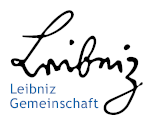- Das Institut
- Forschung
- Diktaturen im 20. Jahrhundert
- Demokratien und ihr historisches Selbstverständnis
- Transformationen in der neuesten Zeitgeschichte
- Internationale und transnationale Beziehungen
- Editionen
- Dissertationsprojekte
- Abgeschlossene Projekte
- Dokumentation Obersalzberg
- Zentrum für Holocaust-Studien
- Berliner Kolleg Kalter Krieg
- Publikationen
- Vierteljahrshefte
- Archiv
- Bibliothek
- Zentrum für Holocaust-Studien
- Aktuelles
- Termine
- Presse
- Neuerscheinungen
- Aus dem Institut
- Themen
- Reordering Yugoslavia, Rethinking Europe
- 75 Jahre Institut für Zeitgeschichte
- München 1972
- Confronting Decline
- Digitale Zeitgeschichte
- Das Deutsche Verkehrswesen
- Bundeskanzleramt
- Demokratische Kultur und NS-Vergangenheit
- Geschichte der Treuhandanstalt
- Akten zur Auswärtigen Politik
- Dokumentation Obersalzberg
- Edition "Mein Kampf"
- "Man hört, man spricht"
- Newsletter
Call for Papers
Authenticity in European Cities. Creating, Visualizing, and Contesting Urban and Built Heritage
16 – 17 March, 2023
Leibniz Centre for Contemporary History Potsdam
The conference "Authenticity in European Cities. Creating, Visualizing and Contesting Urban and Built Heritage" will focus on how buildings, urban neighborhoods, urban spaces and actors were and
are perceived as “authentic”. Debates on how a city should look like and who decides which objects are worth representing it are a major opportunity to analyze “regimes of historicity” (François Hartog)
as well as past and present urban societies. We will focus on the field of built heritage with its various forms of reconstruction, renovation or demolition. Another focus will be laid on the question of
urbanity. What makes a city “unique”, “characteristic”, and “urban” and how have these images of urbanity changed in the past and present?
The conference is part of the research project "Urban Authenticity. Creating, contesting, and visualizing the built heritage in European cities since the 1970s", which is funded by the Leibniz
Association. It is a collaboration of the Leibniz Institute for Research on Society and Space, the Leibniz Institute for Contemporary History (IfZ), the Herder Institute for Historical Research on East
Central Europe, the Leibniz Centre for Contemporary History Potsdam, and the Association of Museums in Brandenburg.
We invite contributions presenting case studies on European cities as well as comparative approaches. Papers from the fields of contemporary history, urban history, heritage conservation, (critical) heritage studies, cultural studies, sociology, art or architectural history are of special interest. Travel and accommodation costs are covered.
Please send your proposals (max. 300 words) and a brief biographical note (max. 150 words) to Daniel Hadwiger (daniel.hadwiger(at)leibniz.irs.de) by December 9th, 2022. Applicants will be
notified of acceptance by December 16, 2022.



